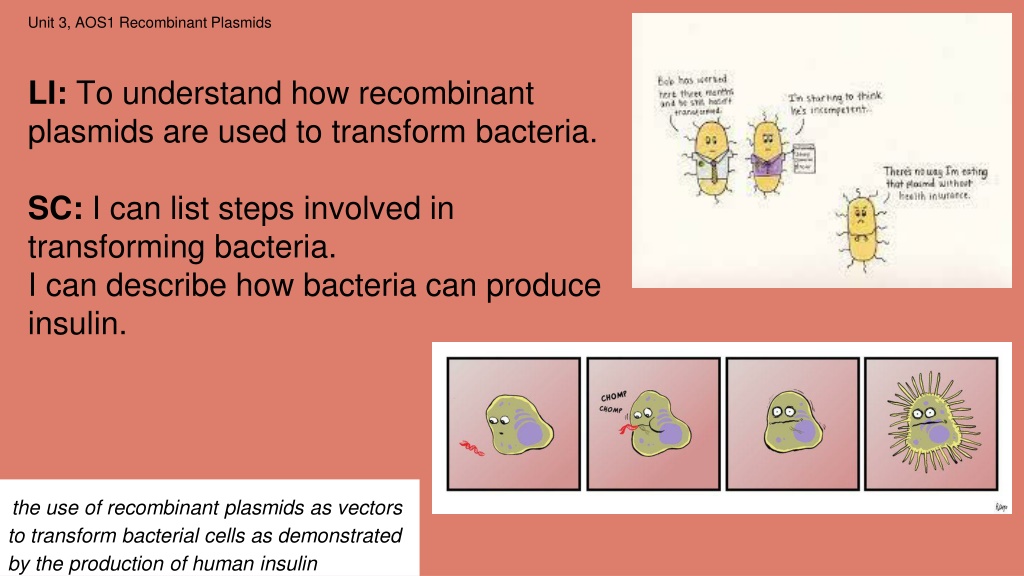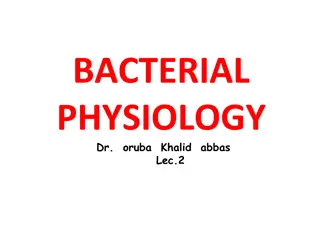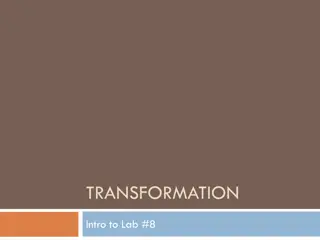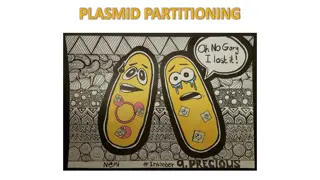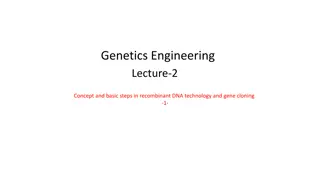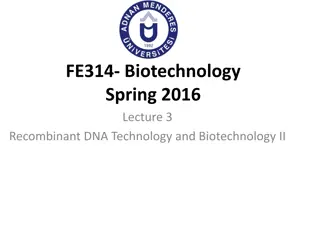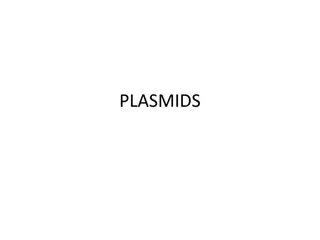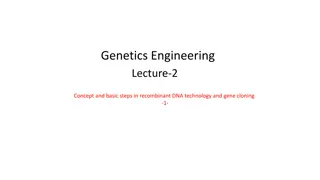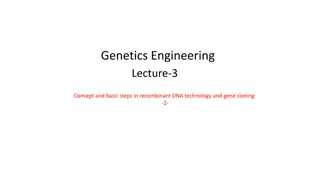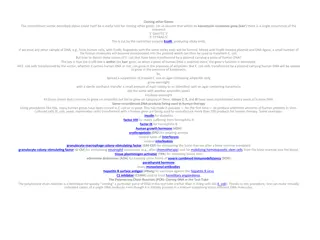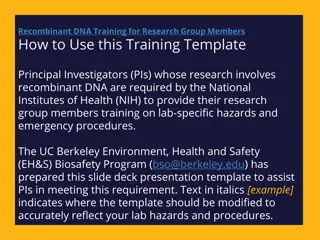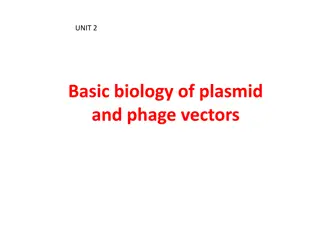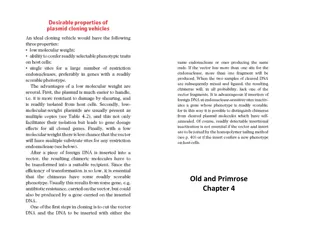Understanding Recombinant Plasmids in Bacterial Transformation
Recombinant plasmids play a crucial role in transforming bacteria for producing proteins like insulin. The process involves steps such as uptake through methods like heat shock or electroporation, culturing with antibiotics, and selection of transformed cells. By introducing human genes into bacteria using recombinant plasmids as vectors, insulin production can be achieved. The recombinant DNA molecules are created by combining human genes with plasmids and inserting them into bacterial cells. Understanding this process is essential for applications in biotechnology.
Download Presentation

Please find below an Image/Link to download the presentation.
The content on the website is provided AS IS for your information and personal use only. It may not be sold, licensed, or shared on other websites without obtaining consent from the author. Download presentation by click this link. If you encounter any issues during the download, it is possible that the publisher has removed the file from their server.
E N D
Presentation Transcript
Unit 3, AOS1 Recombinant Plasmids LI: To understand how recombinant plasmids are used to transform bacteria. SC: I can list steps involved in transforming bacteria. I can describe how bacteria can produce insulin. the use of recombinant plasmids as vectors to transform bacterial cells as demonstrated by the production of human insulin
Uptake of Plasmid Involves the plasmid being inserted into the cytoplasm of bacteria. Two methods to promote uptake: - Heat shock - Electroporation Bacteria can then be cultured/grown and then further isolated by the addition of antibiotics Those that have taken up the recombinant plasmid containing the human gene and the antibiotic resistant genes will grow on ampicillin disc and those without it will be destroyed
Heat shock - Bacteria placed in calcium ion solution on ice (positive calcium ions make plasma membrane more permeable to the negatively charged DNA). - Solution is then heated to 37-42 C for 25-45 seconds and then placed on ice. - Sudden change in temp makes the plasma membrane even more permeable, allowing vectors to cross the phospholipid bilayer.
Electroporation - Mixture of recombinant and non-recombinant plasmids are subjected to electrical current that creates holes in the membrane which helps the plasmids enter the bacteria.
Escherichia coli bacterial cell Preparation of the Clone Human cell USING PLASMIDS Human gene Plasmid Chromosome Stic ky end DNA in chromosome Stic ky end Plasmid vector A gene of interest (DNA fragment) is isolated from human tissue cells Restriction enzyme recognition sequence Ampicillin- resistance gene Human DNA and plasmid are treated with the same restriction enzyme to produce identical sticky ends Gene disrupted An appropriate plasmid vector is isolated from a bacterial cell Stic ky end s Restriction enzyme cuts the plasmid DNA at its single recognition sequence Mix the DNAs together and add the enzyme DNA ligase to bond the sticky ends Recombinant DNA molecule Human gene Recombinant plasmid is introduced into a bacterial cell by simply adding the DNA to a bacterial culture where some bacteria take up the plasmid from solution
Finding Transformed Bacteria Bacterium Bacteria containing the recombinant plasmid are spread onto an agar plate containing ampicillin (type of antibiotic). Human gene Recombinant plasmid The only bacteria to survive will be those that have taken up the plasmid, whether it is a recombinant or non-recombinant plasmid. These bacteria have the ampicillin resistance (ampR) gene. All other bacteria will be killed. All colonies look identical but only some have the plasmid with the human gene. Agar containing ampicillin allows only bacterial colonies with the plasmid to grow. Dish A Filter paper is pressed against the agar plate thereby transferring colonies of bacteria to the paper. Filter paper Colonies with the human gene can be located according to their position on the original dish A. Dish B
Finding transformed bacteria with recombinant plasmids - Use of a reporter gene, such as lacZ that makes the bacteria blue. . Non-Recombinant: - The reporter gene is continuous and WILL be blue Recombinant - The reporter gene is split by the gene of interest, which disrupts the gene and it will NOT be blue.
Examples of why this is done Protein production the transformed bacteria are cultured and induced to transcribe and translate the gene of interest. Then, because bacteria make lots of different proteins, the protein of interest is extracted and purified. Commonly used proteins that are made from transformed bacteria include: Insulin manages diabetes Erythropoietin for treatment of anaemia Growth hormone manages growth disorders Interferon for treatment of some cancers Hepatitis B surface antigen for use in hepatitis B vaccine Chymosin for cheese production Alpha-amylase for ethanol and high fructose corn syrup production.
Summary Plasmids are used as vectors to transform bacterial cells. 1. Cut out gene that you want to insert into plasmid 2. look for a 6 base palindrome (read same forwards and backwards) which will be cut by restriction enzymes 3. Now that we have the cut out DNA, We want to get a plasmid 4. Mix plasmids with bacteria Testing - If bacteria don t grow when introduced with second antibiotic - recombinant plasmid has been taken up Gene cloning copying of bacteria and extracting what we want
If youre still confused here is a lovely simple video with great diagrams https://www.youtube.com/watch?v=GNMJBMtKKWU
Reflection Explain the steps to the person next to you
ACTIVITY 4E 1-4, 11-15 & worksheet 8 heinerman
